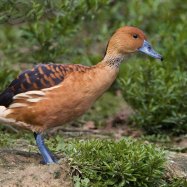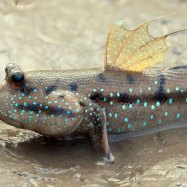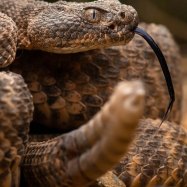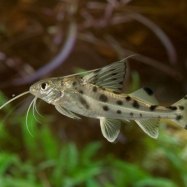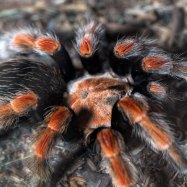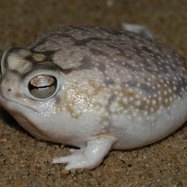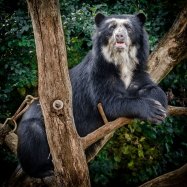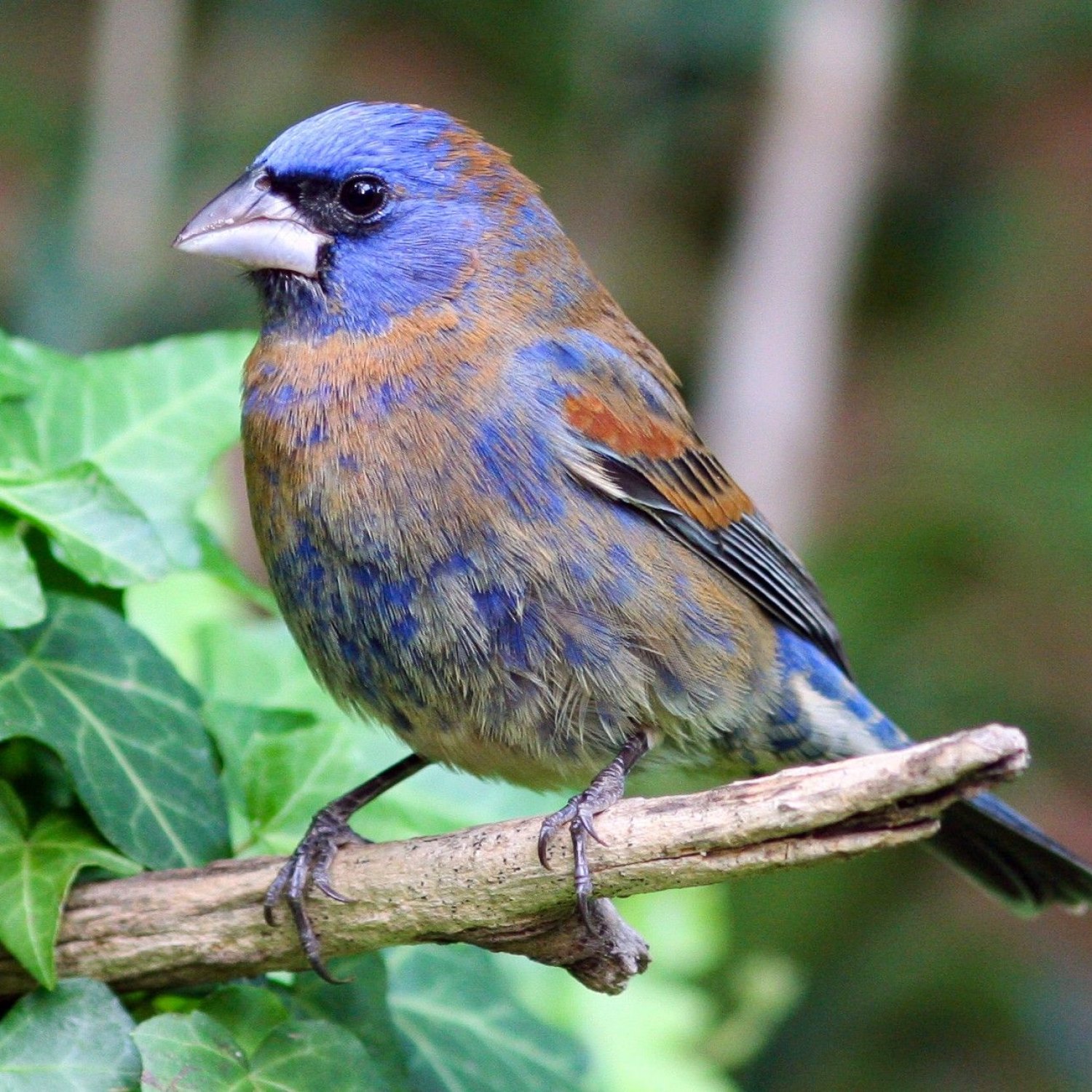
Blue Grosbeak
5.5 - 6.3 inches (14 - 16 cm)
The Blue Grosbeak is a small but striking bird found in the eastern and central United States. With its bold blue color and cone-shaped bill, it's easy to spot in its habitat. Belonging to the Cardinalidae family, this bird measures 5.5-6.3 inches in length and has a stocky build. Keep an eye out for this beautiful bird on your next nature walk! #BlueGrosbeak #birdwatching #naturelovers
Animal Details Summary:
Common Name: Blue Grosbeak
Kingdom: Animalia
Habitat: Open woodlands, brushy fields, and hedgerows
The Breathtaking Blue Grosbeak: The Jewel of North and Central America
Nature always has a way of captivating us with its diverse and magnificent creations. One such creature that never fails to amaze us is the Blue Grosbeak. With its vibrant blue color and sweet melodious songs, this small-sized bird has gained popularity among bird watchers, photographers, and nature enthusiasts all around the world. Let's dive deep into the world of the Blue Grosbeak and discover its outstanding features that make it a treasure of North and Central America Blue Grosbeak."Scientific Name: Passerina caerulea, Common Name: Blue Grosbeak"
Blue Grosbeak is scientifically known as "Passerina caerulea," derived from the Latin word "caerulea," which means sky blue. It belongs to the kingdom Animalia, phylum Chordata, and class Aves, making it a close relative of other birds. This striking bird is a member of the cardinal family, Cardinalidae, which includes other colorful birds like Northern Cardinals and Painted Buntings. Its distinctive features, including its color and habitat, set it apart from other birds, earning it the nickname "Blue Cardinal."
"Habitat: Open woodlands, brushy fields, and hedgerows"
The Blue Grosbeak is usually found in open woodlands, brushy fields, and hedgerows. These small birds prefer to live in areas with dense vegetation that provides them with enough cover and nesting sites. They are known to thrive in habitats with a mixture of trees, shrubs, and grasses, making them well-adapted to a variety of environments.
With its robust and versatile nature, the Blue Grosbeak can be found in different regions, including the United States, Central America, and Mexico. However, their population is most abundant in North America, making this continent their primary geographical distribution Bee Eater.
"Feeding Method: Omnivorous, primarily feeds on insects, seeds, and fruits"
The Blue Grosbeak follows an omnivorous diet, meaning it feeds on both plant and animal matter. They primarily consume insects like caterpillars, grasshoppers, and beetles, which are a vital source of protein for them. These birds are also known to eat seeds, berries, and fruits, especially during winter when insects are scarce. Their strong and cone-shaped beak helps them crack open seeds and consume them with ease.
Interestingly, these birds have a unique hunting technique. They hop along the ground and use their sharp beak to dislodge insects from the grass. They also catch flying insects mid-air, making them an adept hunter.
"Country of Origin: United States"
The Blue Grosbeak is a native bird of the United States, and it has a long history in the country. It can be found in the eastern and central parts of the United States, with a population ranging from the Midwest to the southern parts of California and Colorado.
They are known to migrate to the southern regions of the United States during winter, while some have also been spotted in Central America and Mexico. This migratory pattern makes them a common sighting in the bird-watching community.
"Length: 5.5 - 6.3 inches (14 - 16 cm)"
Blue Grosbeaks are small-sized birds, measuring around 5.5 - 6.3 inches (14 - 16 cm) in length. Compared to other bird species, they have a relatively stocky build, adding to their unique appearance. Their body shape is cone-shaped, with a short tail and broad wings, making them agile and swift flyers.
"Animal Coloration: Males are vibrant blue with chestnut-brown wings, while females are light brown with a tinge of blue on the wings"
One of the most striking features of the Blue Grosbeak is their vibrant blue color. The male birds boast a deep blue plumage on their head, back, and chest, with chestnut-brown wings. Their appearance is a sight to behold, and they often steal the spotlight with their colorful display. The females, on the other hand, have light brown feathers with a subtle tinge of blue on their wings. This combination of colors makes them well-camouflaged in their natural habitat.
The male birds showcase a stunning courtship display during the breeding season. They sing melodious songs and perform acrobatic flights to attract their potential mates. This display of their vibrant colors and beautiful songs is what makes them one of the most adored birds in North and Central America.
"Order: Passeriformes"
The Blue Grosbeak belongs to the order Passeriformes, which comprises more than 5,000 species of birds. This group is also known as the "perching birds" as they excel in perching on branches and other surfaces. This unique characteristic of the Passeriformes is attributed to their specialized foot structure, which allows them to grip and perch easily.
"Family: Cardinalidae"
Blue Grosbeaks are members of the Cardinalidae family, which includes other colorful birds like Northern Cardinals, Summer Tanagers, and Scarlet Tanagers. This family of birds is known for their vibrant plumage and beautiful songs. The females of this family are known to have more subtle colors compared to the males, making the males stand out even more.
"Conclusion: The Blue Grosbeak, A Jewel of North and Central America"
In conclusion, the Blue Grosbeak is a small but significant addition to the diverse wildlife found in North and Central America. Their unique characteristics, including their vibrant blue color, versatile habitat, and omnivorous diet, make them a treasure for bird enthusiasts and nature lovers. With its melodious songs and stunning courtship displays, this bird has captured our hearts and continues to do so every time we spot one in the wild. The Blue Grosbeak is a true gem of the animal kingdom, and its presence serves as a reminder of nature's endless wonders.

Blue Grosbeak
Animal Details Blue Grosbeak - Scientific Name: Passerina caerulea
- Category: Animals B
- Scientific Name: Passerina caerulea
- Common Name: Blue Grosbeak
- Kingdom: Animalia
- Phylum: Chordata
- Class: Aves
- Order: Passeriformes
- Family: Cardinalidae
- Habitat: Open woodlands, brushy fields, and hedgerows
- Feeding Method: Omnivorous, primarily feeds on insects, seeds, and fruits
- Geographical Distribution: North and Central America
- Country of Origin: United States
- Location: Eastern and central parts of the United States
- Animal Coloration: Males are vibrant blue with chestnut-brown wings, while females are light brown with a tinge of blue on the wings
- Body Shape: Small-sized bird with a stocky build and a cone-shaped bill
- Length: 5.5 - 6.3 inches (14 - 16 cm)
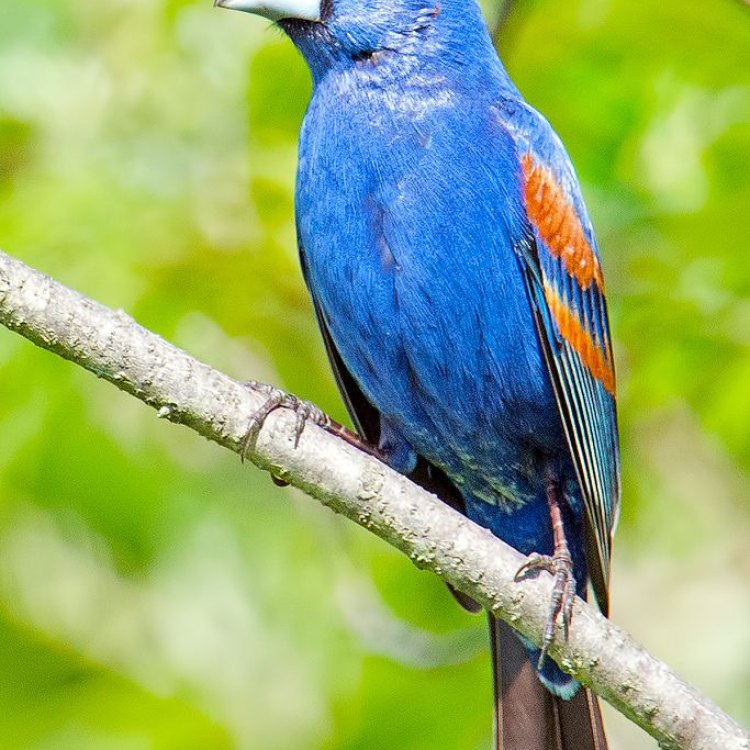
Blue Grosbeak
- Adult Size: Small
- Average Lifespan: 2 - 5 years
- Reproduction: Sexual
- Reproductive Behavior: Males perform courtship displays to attract females
- Sound or Call: Song consists of a series of rich, warbling notes
- Migration Pattern: Migratory, with some individuals staying in their breeding range throughout the year
- Social Groups: Solitary or in pairs
- Behavior: Active and agile, often seen perching on elevated areas
- Threats: Loss of habitat, agricultural intensification, and climate change
- Conservation Status: Least Concern
- Impact on Ecosystem: Helps control populations of insects and disperses seeds
- Human Use: Popular among birdwatchers and commonly kept as pets
- Distinctive Features: Vibrant blue plumage of males
- Interesting Facts: The Blue Grosbeak is known for its elaborate courtship displays, in which males erect their crest, spread their wings, and sing to attract females.
- Predator: Birds of prey, snakes, and mammals
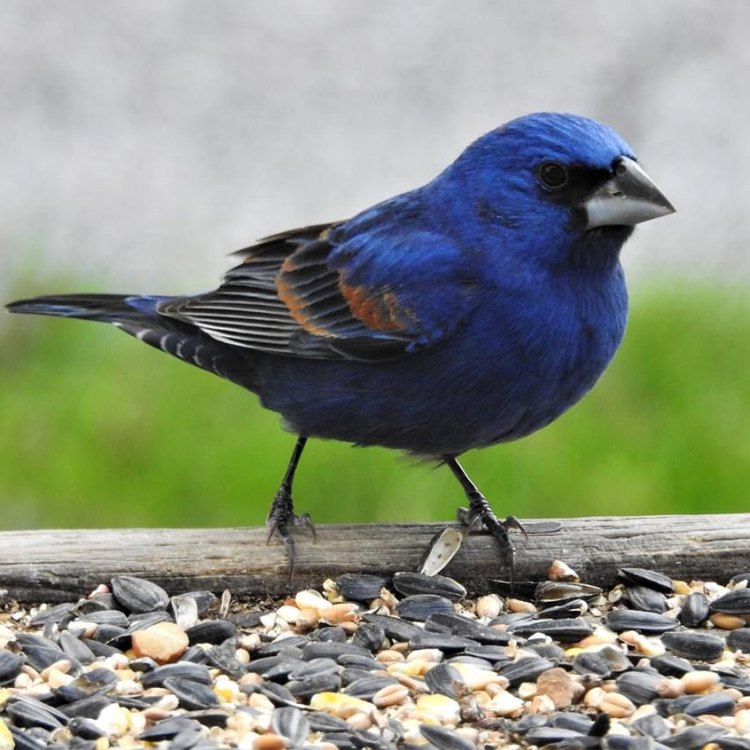
Passerina caerulea
The Colorful Blue Grosbeak: A Small But Impactful Bird
In the bustling world of birds, where bright colors and unique behaviors are the norm, there is one small but significant species that stands out - the Blue Grosbeak. With its vibrant blue plumage, charming courtship displays, and important role in the ecosystem, this small bird has made a big impact.Adult Blue Grosbeaks are considered small in the world of birds, with an average size of only 6 to 7 inches. Despite their small stature, these birds have an energetic and agile behavior, often seen perching on elevated areas such as tree branches or powerlines PeaceOfAnimals.Com.
The average lifespan of a Blue Grosbeak is only 2 to 5 years, but they make the most of their time by being active and contributing to their environment. This species plays a vital role in controlling the populations of insects, as well as dispersing seeds, making them an important link in the food chain.
One of the most distinct features of the Blue Grosbeak is the vibrant blue plumage of the males. This bright shade of blue is what catches the eye of birdwatchers and makes them a popular bird to observe. However, these eye-catching colors also make them targets for predators such as birds of prey, snakes, and mammals.
Reproduction is a crucial aspect of any species' survival, and the Blue Grosbeak is no different. These birds have a sexual reproductive behavior, with males performing elaborate courtship displays to attract females. This involves the male erecting their crest, spreading their wings, and singing a series of rich, warbling notes. These displays not only attract a female partner but also serve as a way for males to defend their territory against other males Barb.
Once a pair has formed, they will build a nest together, typically in a small tree or shrub. The female lays 3-4 eggs, and both parents take turns incubating them for about two weeks. The chicks are then usually fledged within two weeks, after which they will leave the nest and begin exploring the world.
Blue Grosbeaks are migratory birds, with their breeding range being in the southern United States and parts of Central America. They can be found in open habitats such as grasslands, agricultural fields, and brushy areas. During the breeding season, males will establish territories and attract females, but outside of this time, they may be solitary or in pairs. Some individuals may stay in their breeding range throughout the year, while others will migrate south to Mexico and Central America for the winter.
Unfortunately, the Blue Grosbeak and many other bird species are facing threats due to human activities. This includes loss of habitat from deforestation, agricultural intensification, and climate change. Human development and expansion into natural areas have significantly reduced the birds' breeding and foraging grounds, making it challenging for them to survive. Due to these threats, the Blue Grosbeak has been listed as a species of Least Concern on the IUCN Red List, meaning it is not currently in imminent danger of extinction. However, continued conservation efforts are crucial to ensure their survival in the future.
Fortunately, there are still ways that humans can benefit from the presence of Blue Grosbeaks. These birds are popular among birdwatchers, who can appreciate their beauty and observe their behaviors in the wild. They are also commonly kept as pets, although it is essential to ensure that they are obtained ethically and from reputable sources.
In the larger scheme of things, the Blue Grosbeak may seem like a small and insignificant bird. But when you look closer, you can see the significant impact they have on their ecosystem and our lives. From controlling the populations of insects to providing us with respiratory benefits by dispersing seeds, these birds play a vital role in maintaining balance in nature.
In conclusion, the Blue Grosbeak may be small, but it is a fascinating and important bird. Its colorful plumage, elaborate courtship displays, and integral role in the ecosystem make it an exciting species to observe and learn about. As humans, it is our responsibility to take steps to protect and conserve this beautiful bird and the habitats it relies upon. By doing so, we can ensure that the Blue Grosbeak continues to brighten our world with its presence for generations to come.
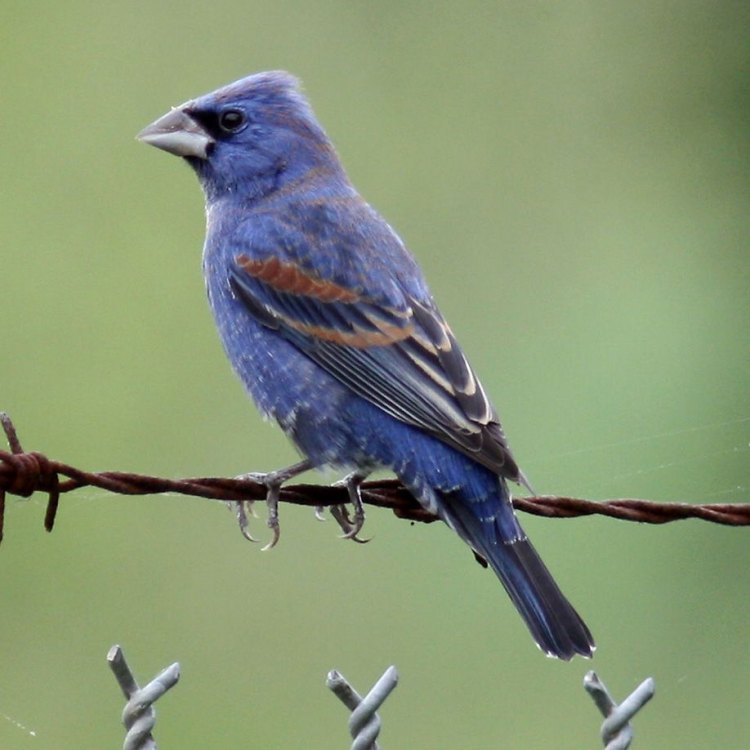
The Breathtaking Blue Grosbeak: The Jewel of North and Central America
Disclaimer: The content provided is for informational purposes only. We cannot guarantee the accuracy of the information on this page 100%. All information provided here may change without prior notice.

